
September 1st:
"Workshop of 3D Technologies for Cultural Heritage Applications"
Aligned with the opening of the "Reshaping History" exposition, an open workshop will be held to illustrate how
3D technology may collaborate with the fields related to cultural heritage.
All talks are open to the public, and will take place in the main auditorium at FGV. Registration for the workshop is free.
A simultaneous interpretation service will be available.
Invited Speakers
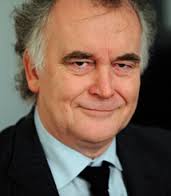
David Arnold
Professor David Arnold MA, PhD, FBCS, CEng, CITP is Director of Research Initiatives and Dean of the Brighton Doctoral College. As head of Brighton’s Cultural Informatics Research Group his research interests lie in the area of technologies supporting the documentation, analysis and use of digital cultural heritage data. In parallel to these roles he has been the coordinator of two large EU projects since 2002, with a total contribution of over €16M. The latest “Tools and Expertise for 3D Collection Formation” (www.3d-coform.eu) involves 19 partners and is due to complete in Nov 2012. David holds an MA (1976, Engineering and Computer Science) and PhD (1978, Architecture) from the Centre for Land Use and Built Form Studies at Cambridge, and was at UEA, Norwich, from 1978-2002, being elected Dean in 1986 and promoted to Professor in 1989. In 2002 he joined the University of Brighton as Dean of the Faculty of Management and Information Sciences. Professor Arnold is a Chartered Engineer, a Chartered Information Technology Professional, a member of the UK Computing Research Committee (UKCRC). He is also a Fellow of the British Computer Society (FBCS) and the EUROGRAPHICS Association of which he is a past chairman. He was the founding editor-in-chief of the ACM Journal on Computing and Cultural Heritage (JOCCH) and the AHRC Peer Review College.
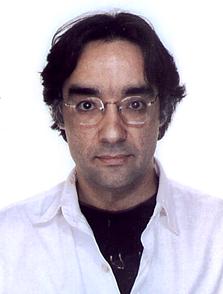
Luiz Velho
Luiz Velho is a Full Researcher / Professor at IMPA - Instituto de Matematica Pura e Aplicada, and the leading scientist of VISGRAF Laboratory. He received a BE in Industrial Design from ESDI / UERJ in 1979, a MS in Computer Graphics from the MIT / Media Lab in 1985, and a Ph.D. in Computer Science in 1994 from the University of Toronto under the Graphics and Vision groups. His experience spans the fields of modeling, rendering, imaging and animation. He has published extensively in conferences and journals of these areas. He is also author of several books and has taught many courses on Visual Computing topics. He coordinated various research and development projects related to 3D reconstruction.
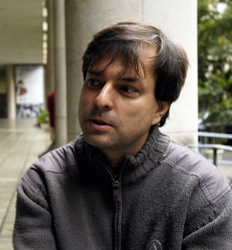
Jorge Lopes
Jorge Lopes is a research and professor of the Graduate School of Arts and Design at PUC Rio. He is the coordinator of NEXT - Tridimensional Experimentation Group - DAD / PUC Rio, and a full research under the Ministry of Ciência, Tecnology and Inovation. He is also a collaborator of the National Museum - UFRJ. He has a PhD in Product Design - Royal College of Art, and has many works in 3D printing within the permament collection of the Science Museum in London. Currently is Research Fellow at the Archeology Department of the National Museum in scanning tecnologies for archeology.
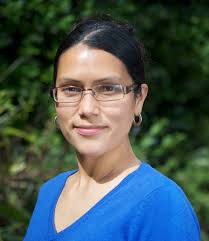
Karina Echavarria
Karina is a Senior Lecturer at the University of Brighton. She obtained her Computer Systems Engineering degree from the ITESM, Mexico in 1999; her PhD at the University of Wolverhampton in the area of knowledge-based engineering in 2005 and an MA in Histories and Cultures at the University of Brighton in 2008. Karina has worked in several European projects researching in the areas of digital collections and 3D technologies for cultural heritage organisations producing research outputs in interdisciplinary areas such as computer graphics, information and knowledge management as well as cultural heritage. She is currently the Principal Investigator on the national EPSRC project “Automatic Semantic Analysis of 3D Content in Digital Repositories” (2014-2015). Her research interests include the documentation and visualisation of heritage collections, information and knowledge management of 3D artefacts, semantic technologies, 3D printing, and the practical aspects of deployment in the heritage sector. She serves in various international committees in these areas, and is currently Information Director for the ACM Journal in Computing and Cultural Heritage.
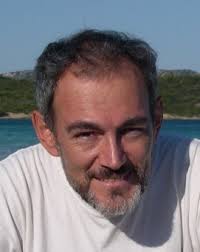
Roberto Scopigno
Roberto Scopigno is a Research Director at ISTI, an Institute of the Italian National Research Council (CNR) located in Pisa, and leads the Visual Computer Lab. He graduated in Computer Science at the University of Pisa in 1984, and has been involved in Computer Graphics since then. He is currently engaged in several EU and national research projects concerned with multiresolution data modeling and rendering, 3D digitization/scanning, scientific visualization, geometry processing, virtual reality and applications to Cultural Heritage. He published more than two hundreds papers in international refereed journals/conferences with Google Scholar h-index 39 and more than 7100 citations. He presented invited lectures or courses at several international conferences. He was Co-Chair of several international conferences and served in the program committees of international events. Since 2012 he is Editor In Chief of the ACM Journal of Computing and Cultural Heritage; he served as Editor in Chief of the journal "Computer Graphics Forum" (2001-2010). He is member of Eurographics, served as elected member of the Eurographics Executive Committee since 2001 and was the Eurographics Chairman on 2009-2010. He is recipient of several awards, including the EG Distinguished Career Award (2014), the EG Outstanding Technical Contribution Award (2008) and the Tartessos Virtual Archeology Award (2011).
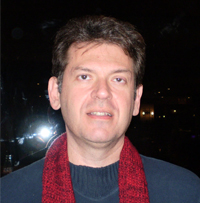
Marcus Granato
Has a BA in Metallurgical and Materials Engineering (UFRJ, 1980), and Master and PHD in the same field at COPPE/UFRJ, and thesis was entitled "Restoration of Valuable Historical Scientific Instruments". He is researcher and coordinator of museology of the Museum of Astronomy and Related Sciences since 2004. He coordinates research and technological development projects, and has organized several national and international events. In 2012 was coordinator of the 31º Symposium of the International Commission of Scientific Instruments. Marcus also lectures at the Graduate Program of Preservation of Scientific and Technological Collections (MAST) and the graduate Program of Museology and Heritage (UNIRIO/MAST), of which he is also the coordinator. His main research interests concern museology and heritage in the following fields: scientific heritage, conservation of metallic objects, and science dissemination.
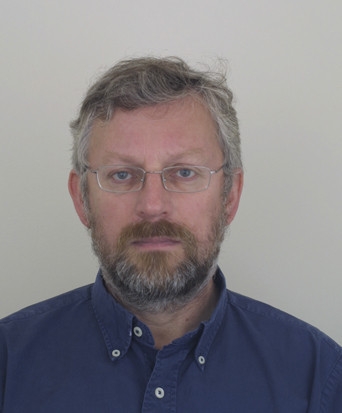
James Stevenson
James Stevenson was the manager of the Photographic Studio at the Victoria and Albert Museum, the National Museum of Art and Design between 1993 and 2013. He has worked as a photographer since 1974 previously at the National Maritime Museum, and within the Health Service and the Horse-racing Industry. The V&A is one of the largest museum collections in the UK and the image archives managed by the Photographic Studio. The V&A was founded in 1856 with the Photographic Studio being one of the first departments formed within the new institution. The Photographic Studio has managed the archive of images continuously since that time. This period of management covers almost the entire history of the photographic process, with today’s expertise concentrating on the digital environment. Stevenson’s team both produces and manage this large digital archive. The Photographic Studio produces over 50,000 images per year of the museum collection, its buildings and activities. The entire digital archive now comprises of 300,000 digital files of 2D images, QT and movie files and 3D virtual models. Stevenson has been involved in several EU computer graphic research projects notably ARTISTE, SCULPTEUR, ARCO and 3D-COFORM. The V&A studio has also participated in many UK funded projects. The products of these projects are now being integrated into current V&A databases. Current activity is concentrating on the issues associated with the digitisation of extremely large cultural heritage collections; their management and how these can be efficiently used by a large international visitor base. Stevenson is now joint partner in the company Cultural Heritage Digitisation Ltd in London, which specialises in archival scanning of large works on paper. www.culturalheritagedigitisation.co.uk
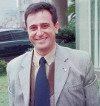
Marcelo Zuffo
Marcelo Knörich Zuffo (36) is full professor at the Eletronic Engineering Department at the University of São Paulo. Graduate as Electric Engineering from EPUSP in 1988, Masters in 1993 and PhD in 1997 from the same university. Currently is coordinator of the Visual Computing and Interactive Electronics Systems Group, where he coordinates research projects in areas such as virtual reality, scientific visualization, digital image processing, information technology for pediatric cancer, and specialized architectures for visual computing. Among his many scientific interests the following are: multimedia hardware, digital tv, volume rendering, interactive systems, and distributed systems. He is member of scientific and professional organizations such as IEEE (The Institute for Electrical and Eletronic Engineers), SBC (Brazilian Computer Society), ACM SIGGRAPH (Special Interest Group in Computer Graphics) and SET (Brazilian Television Engineering Society). In 1991 was one of the organizers of the Brazilian Computer Graphics and Image Processing Conference SIBGRAPI in São Paulo. Was visiting researcher at the Electric Engineering Department at the University of Calgary in 1997 and 1998. In 2000 was SIGGRAPH International Coordinator, that took place in New Orleans. Currently is IEEE secretary of the Brazilian south region. Recently was responsible for implantation of the first Digital Cave in Latin America.
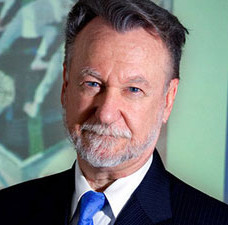
João Cândido Portinari
João Candido Portinari has a Ph.D. from the Massachusetts Institute of Technology - MIT. Before arriving at MIT he passed through the Lycée Louis-Le-Grand, and graduated as a Telecommunication Engineer at the École Nationale Supérieure des Télécommunications. Was one of the founders of the Mathematics Department at PUC-Rio in 1966, and became a professor at IMUC in 1967. In 1979 conceived and started the Portinari Project, a university multi-disciplinary work for researching, documentation and making available a large documentary collection about the life, work and time period of the painter Candido Portinari (1903-1962), as well as art-educations activities for the young public. He is also President of the Cultural Association Candido Portinari.

Allan Rocha
Professor and researcher in Copyrights and Cultural Politics for the Graduate School in Political Sciences, Strategies and Development (PPED/UFRJ) and Civil Rights and Intelectual Property in the Law School of Instituto Três Rios/UFRRJ.
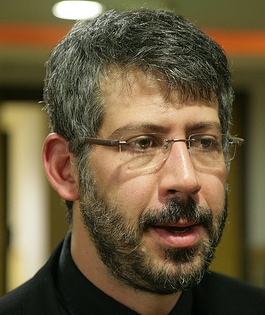
Pedro Puntoni
Is Professor at the Univesity of São Paulo since 1999, researcher of the National Counsel of Scientific and Technological Development (CNPq) and researcher at Cebrap - Brazilian Center for Analysis and Planning (since 1998), where currently coordinates the Nucleus for Digital Culture. Is member of the Counsel for Preserving the Archaeological, Artistic and Touristic Historical Heritage (Condephaat), of the State of São Paulo. Since 2001 is counselor of Cátedra Jaime Cortesão (FFLCH-USP). Was visiting researcher of the Social Sciences Institute at the University of Lisbon (2001) as a posdoc fellow. Was Director of the Brasiliana Guita and José Mindlin Library at USP (2007-2014) and coordinator of the Brasilian Project USP (responsible for the brasiliana digital library - www.brasiliana.usp.br). Was president of the supervising counsel of the Integrated Library System (SIBi) of USP (2010-2014).
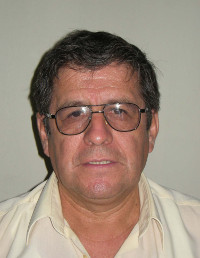
Santiago Uceda
Co-Director of Huaca de la Luna Archaeological Project since 1991 and Principal Professor at National University of Trujillo. He was born October 12th, 1954 in Santiago de Chuco, a city of Peruvian highland. He is graduate of National University of Trujillo. PhD from Quaternary Institute of University of Bourdeaux 1. His thesis was about The Paijanense Culture in Casma valley, Peru. Director of Chavimochic Rescue Archaeological Project (1987-1990), Chief of Archaeology Department in National Institute of Culture (1976-1987). Today is a member of German Archaeological Institute, History of Peru Academy, and Andean Studies Institute and is a hosted professor at University of Huamanga (Peru), Pablo de Olavide University (Spain) and Universities of Rennes 1 and Rennes 2 (France). Since 1991 Uceda has directed the investigations at Huaca de la Luna site, having as objective the study of urbanism and Complex ocieties in Moche valley. The studies have focused on the different architectonical features of the site like Huaca de la Luna, Huaca del Sol and the Urban Core and on the cultural material belonged to these features. In addition, he has developed topics like as the rise of Southern Moche state, the Moche craft production, and the Moche collapse. He has written several features about hunter-gatherer societies on the northern coast of Peru, the role of priests in Moche society, the theocracy and secularism in Moche society, the planning of Moche city and the evolution of Moche political organization.
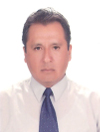
Marco Antonio Machacuay Romero
Graduated in Archeology, Masters in Andean Archeology specialized in Monumental Sites, and PhD in Social Sciences from the National University of San Marcos. Is knowledgeable in archaeological sites management, including legal aspects, research, conservation, administration and formulation, evaluation and management of public investments projects. Acted em many roles on the topic of archaeological sites management, and research of distinct monumental buildings in the archaeological sites of Melgarejo, Huallamarc, Pachacamac, and Salinas in Lima, as well as Chupacigarro e Caral in the Supe Valley. Was field chief of the Caral for 9 years, and in the last years was Director of Research, Conservation and Commissioning for the sites in the Archaeological Sites of Caral. Was Director of the Nation's Municipal Museum; Peru's representative for UNESCO; member of the Commite of Administrative Sanctions against the nations cultural heritage; representative of ICOMOS-Peru and participated as researcher in the development of the Master Plan for the Supe Valley. Has authored many scientific articles; given talks in archaeological events and organized workshops in conservation and research for the formation of new professionals. In the last years carried out research in the topics of monumental archaeological of the Caral Civilization and the primitive societies in Peru. Has obtained the following merits: grant from INABEC to study abroad and from the Morgan Guaranty Trust Company of New York, and granted through the Graduate School of Social Sciences and Andean Archeology of UNMSM, and through the University of Sevilla to participate in the International Congress of Americanists. Obtained merit for participating as member of the research team in the Especial Project of the Caral Archeology through the Directive Counsel of the National Congress.
